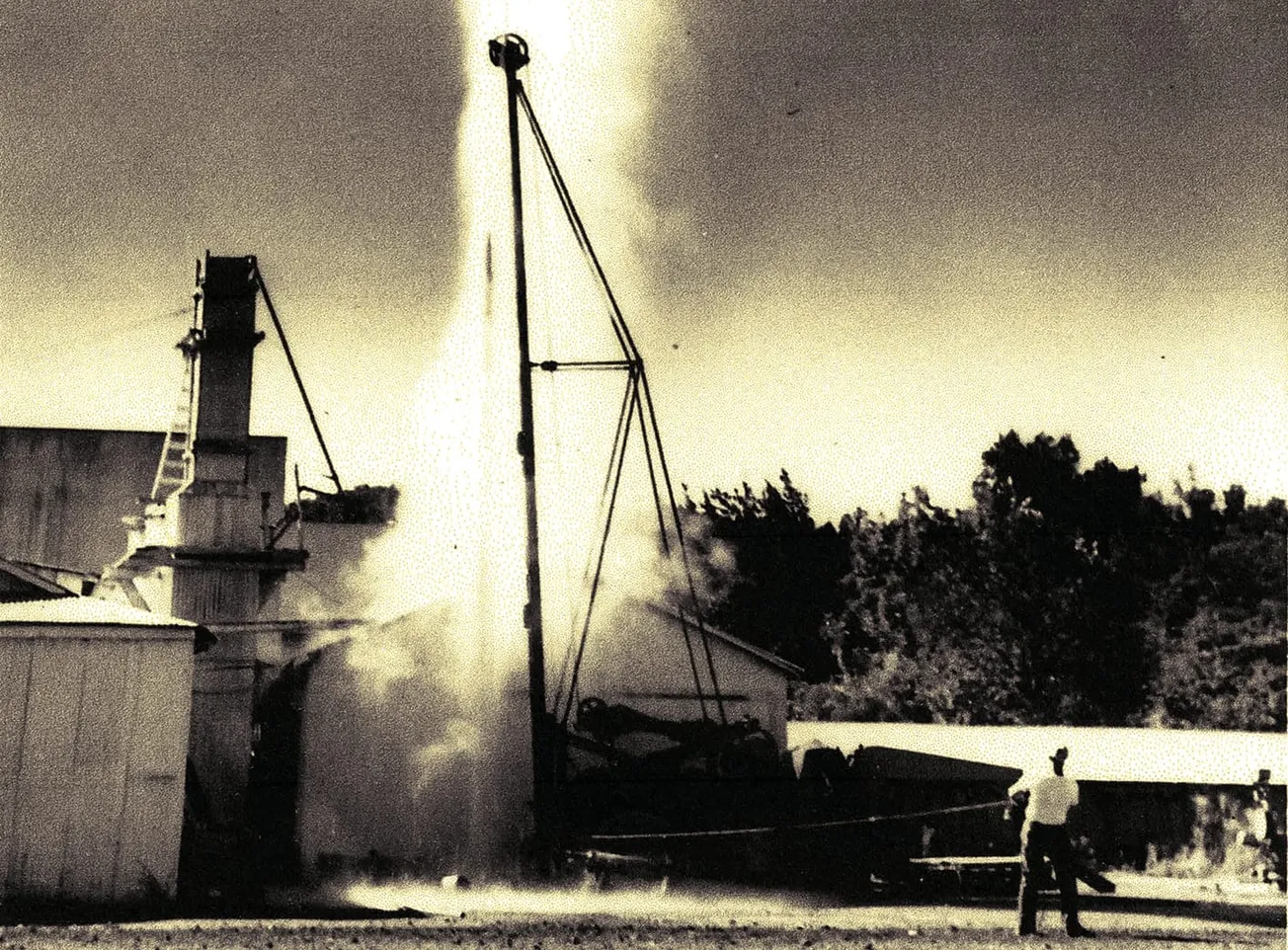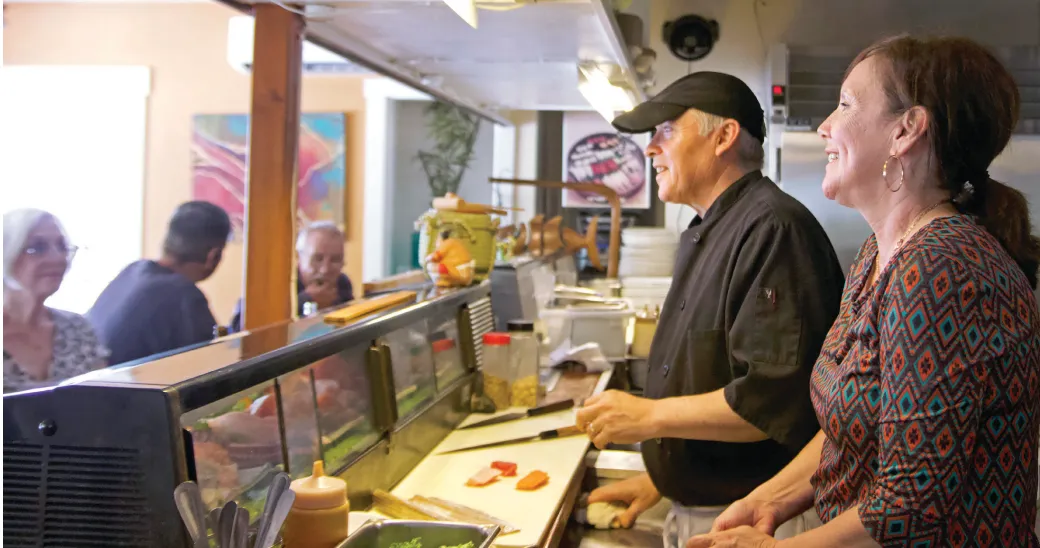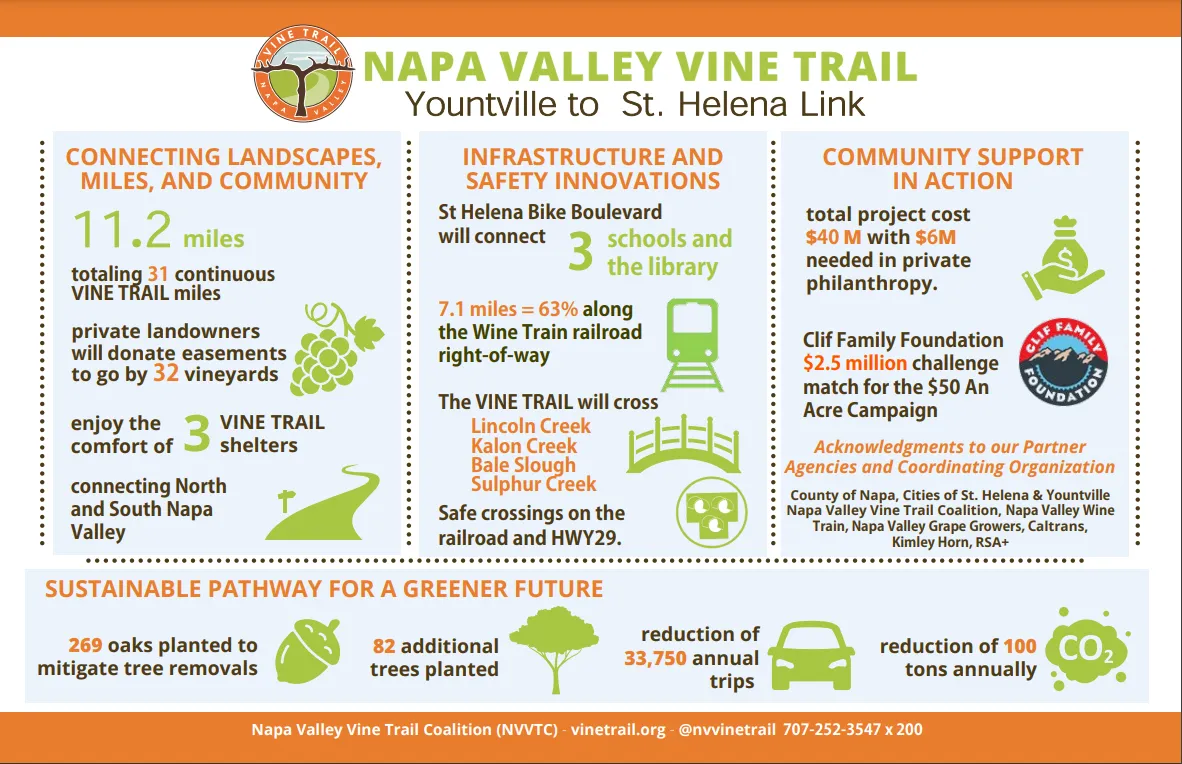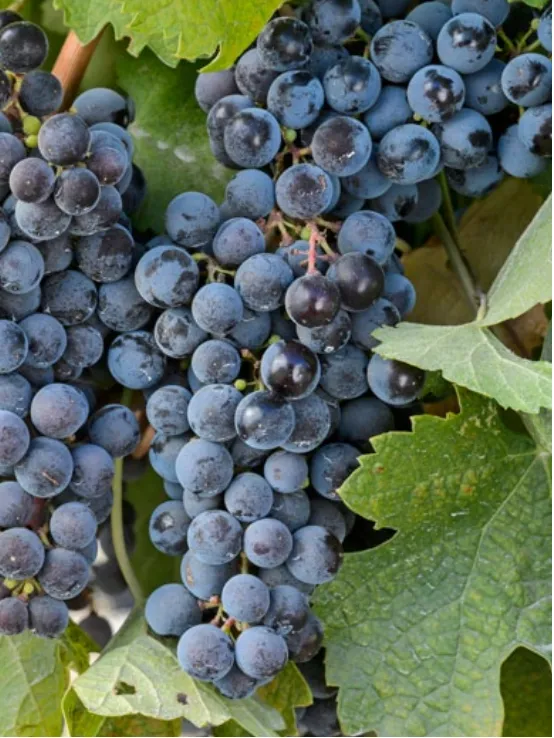CALISTOGA – For a century, the city of Calistoga was a bottling hub for mineral water companies that extracted the natural elixir bubbling deep below the earth’s surface.
Until recently, the homegrown industry thrived, and Calistoga bottled water brands enjoyed wide distribution across the western United States.
Crystal Geyser Water Company’s local plant, the city’s last, was shuttered in January after an almost 50-year run. With no reported plans for another bottling company to take over the facility, the closure signaled an end to the once-prosperous local commodity.
Calistoga was founded as a hot springs and spa destination more than 150 years ago. Now known for its wellness retreats and wine, it was largely the water-bottling industry that made Calistoga a household name.
Health and healing benefits:
The Wappo, an Indigenous people of Napa Valley, had revered the health benefits and healing powers of the water released from the region’s geothermal aquifers for millennia, long before Mormon settler and California’s first millionaire, Samuel Brannan, developed the city’s first hot springs resort in the 1860s and monetized the heated groundwater.
Brannan’s Calistoga Spa became a tourist destination for the San Francisco elite, who would travel up valley via stagecoach, and later by railroad, to bathe in and consume the mineral-dense waters.
The bottling of Napa Valley mineral water can be traced back to the 1870s, but in Calistoga, it wasn’t until 1919 that businesswoman and Indiana native Maude Luella Ackerman founded Calistoga Bottling Works to sell flavored sodas, laying the groundwork for mineral water to be bottled with her equipment years later.
An unpublished Sharpsteen Museum study commissioned by water conglomerate Nestlé Waters North America in 1989 reported that Ackerman modeled the soda fountain after a business she operated in the late 1800s in Grants Pass, Oregon, with her first husband. After he died, she remarried and moved to Calistoga, where she purchased an electric carbonator, siphon filler and capping machine. In town, she established the successful soda works and hired a distributor to deliver her sodas to customers via horse and buggy.
According to the Sharpsteen manuscript, the budding business venture was so prosperous, more than a dozen local businessmen invested in the company. But the store, technically owned by her husband, was regularly broken into, leaving the Ackermans with few options but to sell the company.
In February of 1920, The Weekly Calistogan reported that the Ackermans sold their soda works to local businessman Giuseppe Musante, who had immigrated from Northern Italy to California in 1900.
Musante ran a bustling saloon in Calistoga, called The Railway Exchange, across the street from the Calistoga Depot train station. But in 1920, the onset of Prohibition forced him to repurpose the bar. Ackerman taught Musante how to operate the bottling equipment, and later that year he reopened The Railway Exchange as a soda fountain and candy shop.
That same summer, Musante was drilling for cold water on his property when he accidentally tapped into a vein of 212-degree, mineral-dense water, which geysered from the source.

No stranger to the success of tonic waters in Italy, Musante had observed a similarly thriving market for mineral water while living in San Francisco, much of which had been sourced from Napa Valley aquifers. With the discovery of the geothermal water on his land, he recognized a niche business opportunity.
Musante hired a chemist to analyze the mineral makeup of his new-found hot spring source and, according to the Sharpsteen document, results showed the water contained a variety of sulphates and appreciable levels of lithium, iron, magnesia and lime. He determined that the touted health benefits from the minerals, along with the water’s pleasant taste, made it suitable to bottle for consumption.
Geology and geothermal activity:
The mineral water that put Calistoga on the map is naturally enriched with elements dissolved underground by the boiling water, setting it apart from many of the sparkling water brands popular today.
According to the Federal Drug Administration, bottled mineral water must contain at least 250 parts per million of total dissolved solids derived directly from the spring.
Mineral water is extracted from deep geothermal wells and can contain variations of naturally occurring elements and other trace compounds that vary based on the bedrock’s makeup.
Dean Enderlin, a state-licensed geologist and long-time member of the Napa County Historical Society, said the city’s geothermal water comes from underground at a near-boiling point because it is located above a volcanic field that ran its course more than 2.5 million years ago.
“The molten rock is gone, but its residual heat is still down there,” Enderlin said. “That’s what’s fueling Calistoga’s geothermal fields.”
Unlike natural geysers such as Old Faithful in Yellowstone National Park, Calistoga’s geysers, were artificially created when wells were bored into the geothermic field, generating a vent for the eruptions.
Enderlin said heat and steam from the boiling water, combined with dissolved gases from the once-volcanic terrain, create pressure that can trigger the regular geysering actions in some Calistoga wells.
In geothermal wells, Enderlin said the weight of the water acts as a plug, but as a well fills, the pressure from the vapor and gases builds until eventually, the water is forced out of the well, generating the kind of propulsion that can be seen at Calistoga’s uncapped geysering attraction on Tubbs Lane, Old Faithful Geyser of California, named after its Yellowstone counterpart.
“Think of it like a bottle of Champagne,” Enderlin said. “When it’s capped and under pressure, you don’t see the carbon dioxide. But if you were to shake a bottle of Champagne and uncork it, the contents of half the bottle would go flying through the air.”
Depending on the source, mineral water can be naturally carbonated by gases upon extraction. But in the case of companies like Calistoga Mineral Water and Crystal Geyser, carbon dioxide was artificially added to the water after it had been extracted from the wells, providing the effervescence modern consumers associate with sparkling water brands.
The rise of Calistoga Mineral Water Co.:
In 1924, Giuseppe Musante established the Calistoga Mineral Water Company and began using his soda works equipment to carbonate, bottle and sell the mineral water commercially.
The business became an instant success when the water was awarded top honors for its taste at the California State Fair in Sacramento in 1924 and 1925.
By 1929, Musante was selling his sparkling mineral water in Santa Rosa. As the business grew, the plant’s proximity to the train depot – then called the Southern Pacific Railroad station – proved ideal for statewide distribution.
The Musante family separated the soda fountain and water company and by 1945, they had sold both enterprises. Calistoga Mineral Water changed hands many times over the years as owners struggled to secure a steady customer base for the luxury product.
All other Napa Valley-based mineral water companies had come and gone, but Calistoga Mineral Water survived, if only barely.
In the 1970s, Great Water of France Inc., the company that owned Perrier, ran an aggressive advertising campaign across the U.S. that brought the appeal of sparkling mineral water to the masses. Potential health benefits from the naturally occurring minerals resonated with an emerging health-conscious generation.
Perrier’s marketing blitz, in addition to a growing fear of contaminated drinking water that prompted Congress to enact the Clean Water Act in 1977, was a boon to the entire bottled water industry. For many Americans, bottled mineral water became the beverage of choice, rejuvenating the local brand, dubbed Cal Min by residents.

By the decade’s end, across town from Cal Min, Crystal Geyser had been founded and was bottling sparkling mineral water. The companies would become two of the largest commercial employers in Calistoga.
Cal Min’s final decades:
Through the ‘70s Cal Min’s bottled water was sourced from the well bored by Musante, located just off of Lincoln Avenue. But in 1980, the multinational corporation Perrier Group America purchased Cal Min and operations were moved to a bigger plant on the Silverado Trail.
In 1992, Perrier Group was acquired by Nestlé Waters North America. At the Calistoga plant, Nestlé also bottled products for some of its other brands, including Arrowhead Sparkling Spring Water.
Chris Canning, who worked at Nestlé Waters for 16 years, and who was director of Cal Min in its final years, said that for a time in the 1980s, the Cal Min brand outsold the Perrier brand two-to-one in California and would go on to experience its heyday in the 1990s and early 2000.
Over time, bottled water became less of a luxury and more of a commodity item, but when the economic recession hit in 2008 and disposable income disappeared, Canning said that bottled waters were among the first products consumers gave up.
As the economy recovered, many new seltzer companies burst onto the scene. And by the late 2000s, both Cal Min and Crystal Geyser struggled economically due to an increasingly competitive market, manufacturing limitations and high production overheads that squeezed profit yields.
The explosive growth of carbonated water companies like La Croix and Topo Chico, along with changing tastes, put pressure on legacy brands like Cal Min and Crystal Geyser, which struggled to match the dynamic marketing and efficient production of their competitors.
In 2008, Nestlé announced that its Calistoga workforce would be slashed from 104 employees to 23, and in 2009, the company revealed the plant would shut down. Canning said that at the time of the closure, of Nestlé’s 19 bottling plants across the U.S., Cal Min’s plant was the most expensive and least efficient to operate.
“The brand has great romance,” said Canning, who is also the former mayor of Calistoga. “It’s a real brand, from a real place, with a real story and a real source. It was beloved by a lot of people but the economics of it just didn't work.”
Crystal Geyser’s run:

Crystal Geyser’s Calistoga plant followed a trajectory similar to the one that led to Cal Min’s demise 15 years ago.
The company was founded in Calistoga in 1977 during that decade’s sparkling mineral water boom and was acquired by Japanese pharmaceutical conglomerate Otsuka Holdings Co. in 1991.
Crystal Geyser products bottled at the Calistoga plant had a wide distribution across the West Coast and were sold everywhere from the local Cal Mart to large chains like Costco and Trader Joe’s.
Notably, in 1999, Crystal Geyser experienced a major setback when its on-site wells became contaminated by chemicals that had leached from an underground gasoline tank on an adjacent city-owned property. The discovery forced the company to cease use of the wells and source its mineral water elsewhere for several years.
In recent years, Crystal Geyser made a final push to revitalize the struggling business with expansions and upgrades to the bottling plant. City officials said that since March 2020, the company had been approved for more than $3 million in renovations and facility improvements at the property.

Janice Almond, Crystal Geyser’s vice president of human resources, said in December that several factors, including market conditions and business challenges, led to the decision to shut down the operation.
As a result of the closure in January, 28 employees were laid off and the brand’s line of sparkling mineral and spring water products were discontinued.
Bill Shaw, owner of Calistoga’s only supermarket, Cal Mart, sold Calistoga Sparkling Mineral Water until its demise. Currently, he sells many popular seltzer brands at his supermarket, including Crystal Geyser, La Croix and San Pellegrino.
When he heard Crystal Geyser would close, he scrambled to purchase more than 250 cases of the familiar blue plastic bottles of carbonated water. Shaw said he believes he will sell out of the backstock by summer.
In the Cal Mart warehouse, across from the pallets of Crystal Geyser cases, he gestured to a few dusty boxes bearing the Cal Min logo. They contained glass bottles of the homegrown brand. After Nestlé shuttered the city’s inaugural sparkling mineral water company in 2009, Shaw could not bring himself to sell the last of his inventory.
“Those are just for the memories,” he said of the long-expired liquid vestiges of Calistoga’s storied past. “The city has developed a great character over the years, and the water was a big part of it.”





Clockwise from left: The capped well Giuseppe Musante originally bored in 1920 can still be seen behind Lincoln Avenue Brewery. The last of many styles and iterations of Cal Min water bottle labels before the plant closed in 2009. The time-weathered Cal Min sign, which can still be seen from the Silverado Trail. A spouting geyser from the 1940's. The entrance to the old Cal Min plant on Silverado Trail.








